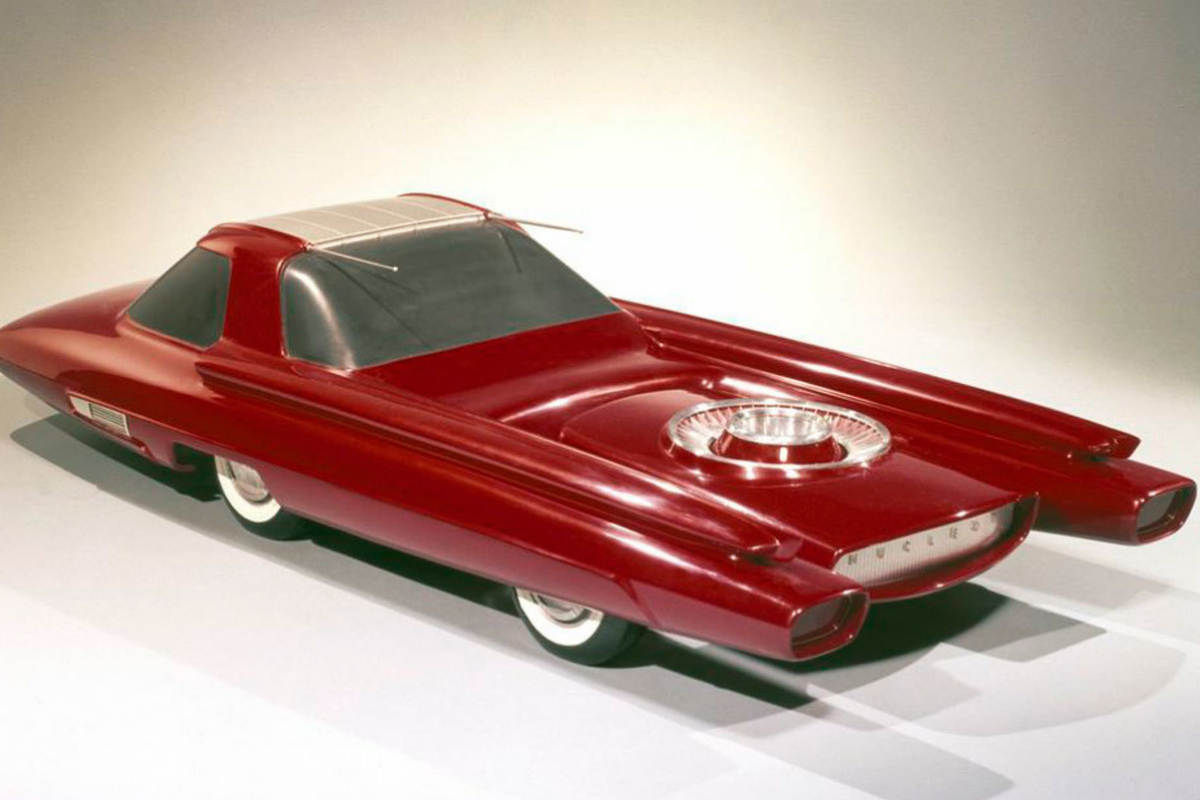- Mobility: the other green cars: there is life beyond the electric ones
- New: Toyota solar car: the definitive push to electric
- Motor.Quant, the car that could run on seawater
Today in the automotive there is a transition to the electric. Although debates are still open within this theory. Is it necessary to promote cleaner combustion models to meet emission targets? What happens hydrogen? What about gas as a propulsion?
Questions that fall within a common logic. Gone are the failed experiments like solar cars, those that move by water and the great fantasy of the 50s: cars powered by nuclear energy. The crazy atomic race between the two powers: the US and the USSR led to prototypes such as the Ford Nucleon, developed in 1958.
It was nothing more than a branch of a tree that also bore fruit nuclear ships or planes. Ford's concept was divided into two, with a cabin on one side and a propulsion unit on the other. The small nuclear reactor was accompanied by the control system, the cooling system, and the armor. It was never built. It remained in a simple model.
The area where the driver was going was too far ahead to compensate for the weight of the nuclear reactor and at the same time keep passengers away from it. The windshield and rear window were in one piece. How would this car move? A controlled chain reaction of nuclear fission was expected. Fuel, enriched uranium. Sufficient heat would be generated to heat the water in the primary circuit. This would heat the water in a steam generator. In the secondary it would go through a turbine where the thermal energy would be transformed into mechanical.
As is currently the case with alternative energy models, the savings that nuclear energy could generate in its application in combustion were sold . They claimed that this would be almost free. But they were not talking about the initial cost. Only the reactor would shoot the final price.
According to his calculations, more than 8,000 kilometers could be made with each refuel. The creators also put as a purchase argument that the car did not generate smoke of any kind. They also included a network of refueling stations, spread across the road network, where fuel can be safely removed and refueled.
It was a histrionic proposal that was over-optimistic to understand at a time when nuclear energy was even being considered for domestic use. But, imagine a traffic accident between two nuclear cars ... Ford came to present another model with similar nature and intentions as was the Ford Seattle-ite XXI.
It was not the only brand. At the 1958 Geneva Motor Show, the Studebaker-Packard Astral, a nuclear car that surpassed any normality, was presented. No longer just for energy ... It had a single central wheel on which it moved using gyroscopes. It looked like the vehicle of a space family. The fantasy went so far as to claim that he had an energy shield to protect himself and amphibious abilities.
The following year's Geneva edition brought another nuclear proposal: the Simca Fulgur Concept. A model designed as a result of the call made by a French publication about what cars would be like in the year 2000. This model promised a range of 5,000 kilometers ... I wish to be built in the air, since the Fulgur never had the engine imagined nuclear.
Of course, it was the precursor - or tried - of autonomous vehicles, since it had a radar to detect obstacles on the roads. And it was controlled by voice. Come on, a real science fiction exercise.
Nuclear daydreams on wheels did not end in the middle of the last century. At the 2009 Detroit Motor Show, Cadillac unveiled the World Thorium Fuel Concept, a prototype with a nuclear reactor. Thorium reactivated desires, a material presented as safer, cheaper, more abundant and more energetic than Uranium. It had an induction motor on each wheel. Quite curious, by the way, since each one was actually a super tire with six thin tires. Thus, up to 24. This gave him a game of traction, since each one could turn at a speed and in a certain direction. A useful resource, for example, for parking.
In accordance with the criteria of The Trust Project
Know more- Engine
MotorCaravans of cars, the only demonstrations during May 1
MotorGenesis, the new rival luxury brand of Audi, Mercedes-Benz and BMW
MotorSwipcar: "Renting for individuals will be an opportunity after the crisis"

